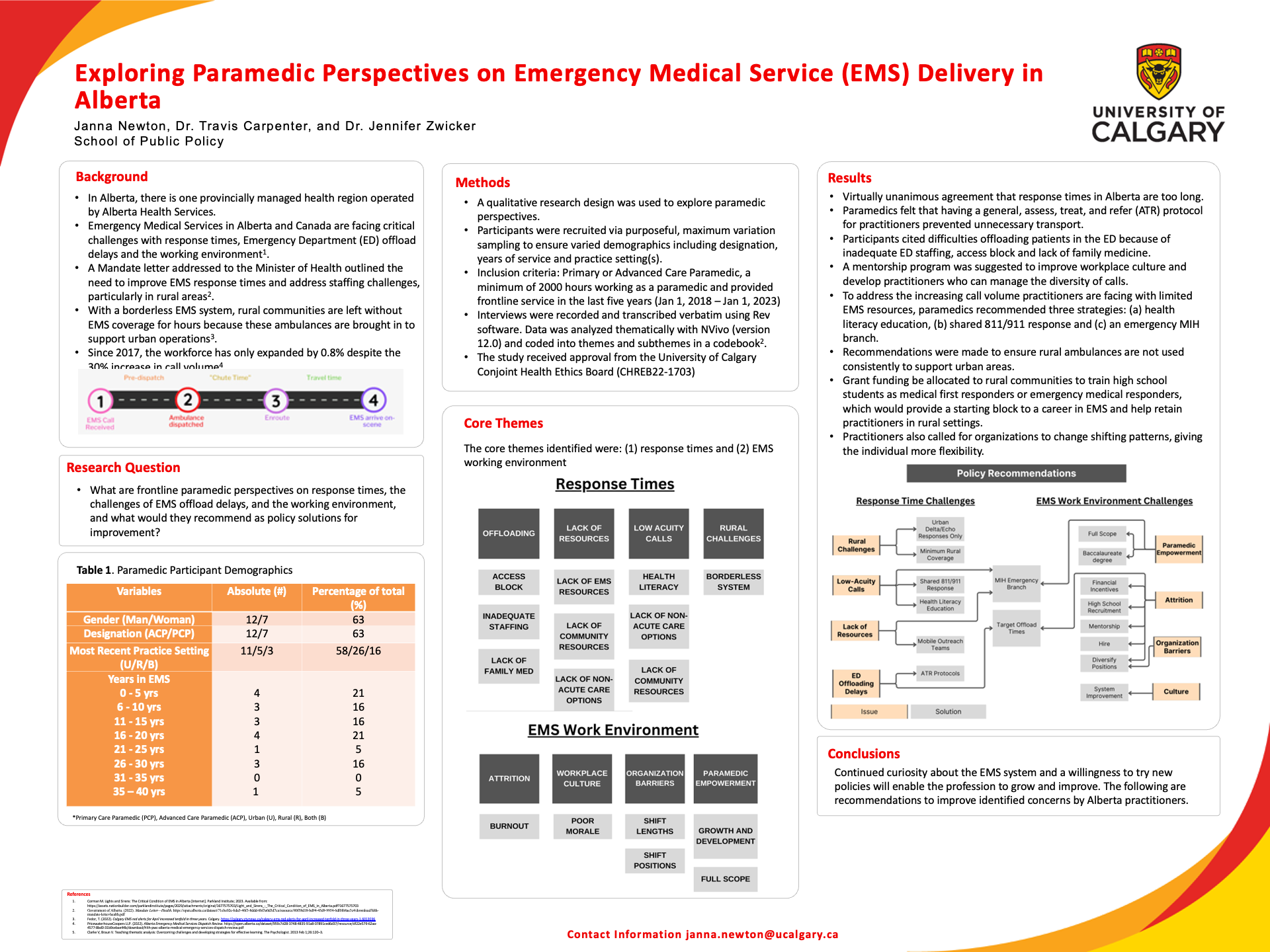|
Exploring Paramedic Perspectives on Emergency Medical Service (EMS) Delivery in Alberta
Introduction: Emergency Medical Services (EMS) in Alberta are facing critical challenges. Since EMS is an understudied field, the basis of evidence needs to be developed and frontline perspective incorporated to understand the optimal role of paramedics in the healthcare system.
Objective: This qualitative study aims to describe and understand the frontline perspective regarding system level issues and propose provider-informed policy recommendations.
Methods: 19 semi-structured one-on- one interviews were conducted with Primary or Advanced Care Paramedics (PCP/ACP) across Alberta. Participants were asked to share their perspectives, experiences and recommendations in relation to EMS response times and the working environment. Interviews were analyzed using thematic analysis to identify themes and subthemes.
Results: Two core themes were identified as areas of concern: poor response times and the EMS working environment, which each influence and impact the other. Within response times, paramedics highlighted specific difficulties with ED offloading, a lack of resources, low-acuity calls, and rural challenges. In terms of the EMS working environment, four subthemes were apparent including attrition, unhealthy culture, organizational barriers and the need for paramedic empowerment. Providers made many recommendations including creating and expanding emergency mobile integrated health (MIH) branches, sharing 811 and 911 responses, and enforcing ED target offload times amongst other suggestions.
Conclusions: While response times are a key and highly visible problem, there are many critical factors like the EMS working environment that degrade patient care and cause concern amongst frontline practitioners. Multifaceted policy changes to be explored to reduce disfunction within EMS services, enhance the well-being of the workforce and deliver improved patient care. Specific EMS-oriented policies are important for moving forward to reduce transfers to EDs, but broader health system which is over capacity causing downstream effects into EMS must be addressed by government and health administrators.
|



